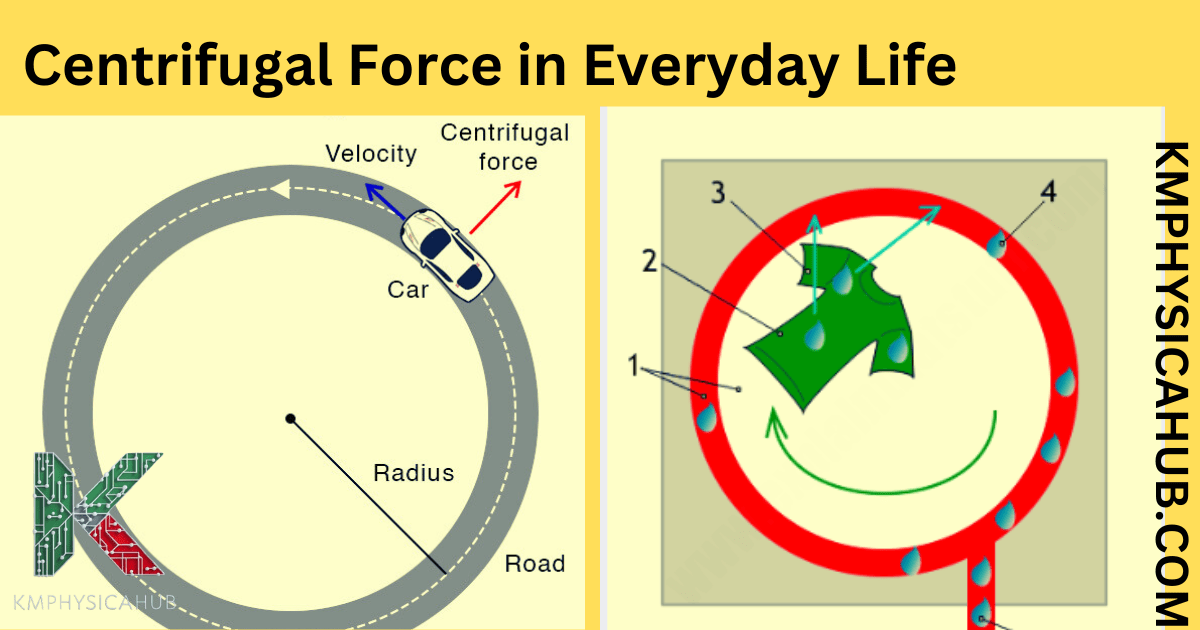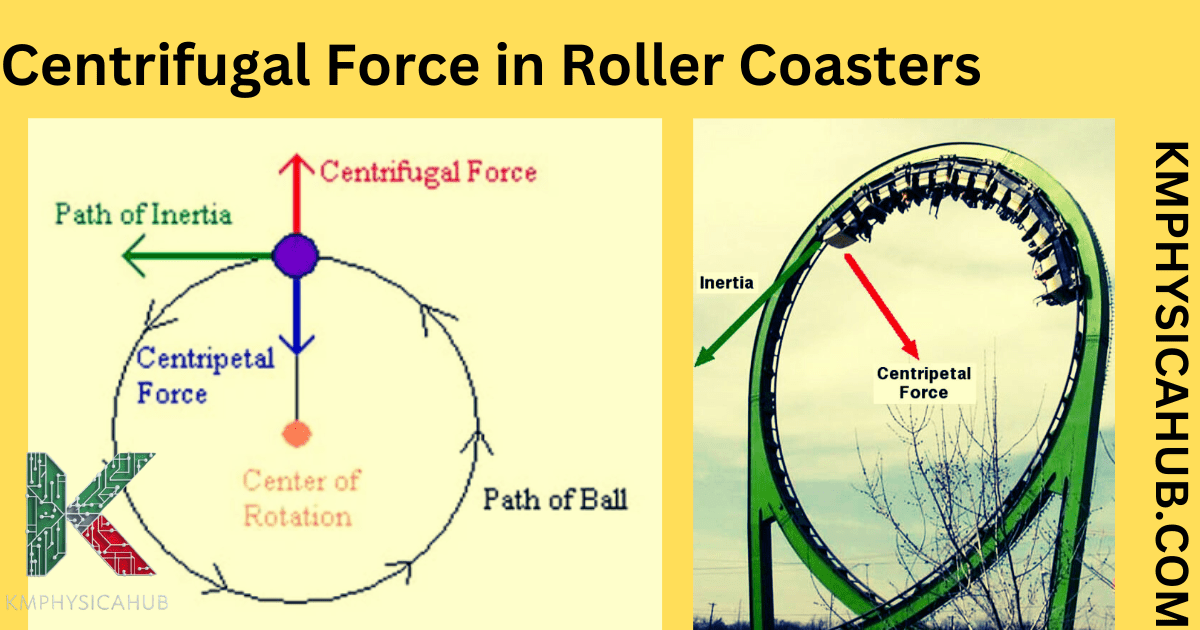The Double-Edged Sword of Centrifugal Force: Weighing its Advantages and Disadvantages
Suppose you have a bucket full of water, and imagine that you holding this bucket at the end of a rope, and you swinging the bucket in a vertical cycle with the help of some action or force. Even if the bucket is turned in another position, the water does not spill—a truly impressive demonstration of an outward force that indeed goes against the force of gravity! This is the classic case of the centrifugal force, an event of some outward force that is thought to influence a rotating body which at the same time is being pushed away from the center.
However, centrifugal force is often named as fictitious force. It’s not as fundamental as gravity or electromagnetism. Rather, it is based on inertia, the tendency of an object to counter change in motion or state. When an object moves in circle its nature is to continue in a straight line that is what causes the outward push.
The Science Behind Centrifugal Force
To really appreciate what is centrifugal force, we have to look at the the source of centripetal force, that is inertial force. Imagine an object that is in straight motion with uniform velocity. As it follow Newton’s First Law, it is inclined to maintain such motion and direction unless interfered by some force. Now, force it to move in a circle, and its inertia will cause it to try and fight this type of motion.
This resistance is the force that exerts the outward push we experience as a centrifugal force. It is not a new force at all; it is just that the force of inertia is resisting the inward force which is centripetal force responsible for circular motion.
Definition:
Centrifugal force is force that appears to pull an object outward and acts perpendicularly to the direction of circular motion.
Mathematical Representation: The magnitude of centrifugal force is given as:
Fc = (m * v²) / r
Where:
- m = mass of the object
- v = velocity of the object
- r = radius of the circle in which object is rotating
Applications of Centrifugal Force
Despite being a “fictitious” force, centrifugal force has real-world consequences, harnessed in countless applications:
Everyday Examples:
Washing Machine:
The rotating barrel of a washer uses centrifugal force to remove water out of the clothes through microscopic holes, thus enabling the drying process of the clothes to take place.
Merry-Go-Round:
The merry-go-round is what creates the thrilling aspect of centrifugal force in the person. The wind, though, is the centrifugal force that enables the passengers to have the feeling of being pulled to the outside.
Curving Cars:
This is the force that causes one to feel a push in a direction opposite the direction of movement when a car is negotiating a bend. The intensity of this sensation depends on the speed of the turn or how sharp the curve is.

Industrial Applications:
Centrifuges:
Industrial and laboratory based centrifuges employ forces that act in a centrifugal fashion to filter out particles with varying densities. They found that the heavier forms pull outward and the lighter ones remain more centralized.
Sieves and Filters:
Centrifugal force aid in the process of straining industrial sieves and filters where a liquid or particles of dissimilar size are separated from solids.
Cream Separators:
Another example is cream separating from milk that is done in the dairy industry through the use of centrifugal force. This process separates the milk, which is the denser part, to the edges, while leaving the lighter cream at the center for collection.
Amusement Park Rides:
The Gravitron:
It is an old fashioned, fun house ride that spins the riders against a wall while the floor opens beneath them. The sticking feeling that one gets on the wall is as a result of the strong force that tries to push everything outwards as the cylinder wall rotates at a very high speed.
Roller Coasters:
Centrifugal force is what gives the corner of the mouth experience of going around loops and along banked curves on a roller coaster. It’s what provides for the sensation of weightlessness and makes one cling on to the chair during a loop the loop.

Sports:
Cycling (Banked Turns):
If riders on bicycles are to make a turn then they incline themselves to the side of the curve. That lets the racer lean properly and in combination with centripetal force created by the velocity, the racer would easily maneuver through the turn.
Throwing a Discus:
In discus throwing a performer uses rotary movement to acquire a state of angular velocity. As the discus is thrown, the force exerted due to the spin enhances the discus’ range and is beneficial to making throws.
Advanced Technologies:
Artificial Gravitation:
Artificial Gravity: One fantastic idea that could be made possible with centrifugal force is the construction of both space stations and artificial gravity not much different from that gravity experienced on Earth.

Centrifugal casting:
The hot metal is pressed into the ever-rotating mold and with the help of centrifugal force it distributes it evenly on the walls, making cylindrical parts empty inside.
Isotope Separation:
Centrifuges, specifically the high speed ones, are utilized in the process of isotope enrichment, that is atoms of the same element but with different atomic weight ideal for the generation of nuclear power and medical uses.
Advantages and Disadvantages
- Advantages:
Efficiency:
Centrifuge is highly effective tool for separation of materials with varying densities. Consider the situation where washing machines swirl water out of the clothes, or industrial centrifuges, which filter blood. This separation process can be accomplished more rapidly and with better yield compared to other methodologies.
Simplicity:
The working process is not very complicated. Rotation creates centrifugal force to be used in different things which can be useful at times. It is observed that this simplicity results in low-cost designs and methods in a vast number of cases.
Cost-Effectiveness:
Centrifugal devices in general could be less costly for operation and maintenance than separation technology or force-inducing technologies. These gadgets usually have fewer components that are required to move, this reduces the amount of wear on the items and hence the need for replacements.
- Disadvantages:
Limitations in Controlling the Force:
It may prove difficult to accurately adjust the amount and direction of the centrifugal force applied to an object. The force is proportional to the rotational speed and radius; this can make it difficult to make minor tweaks to the equipment.
Potential Wear and Tear on Machinery:
Practical applications demand high speeds to yield large centrifugal forces; these powerful forces put a lot of stress on the bearings, motors, gears, and other parts of the equipment. This requires frequent attention in order to be serviced and may cause the failure of the equipment.
Misconceptions and Clarifications
Addressing Common Myths About Centrifugal Force:
The greatest source of confusion is that centrifugal force is actually a real force that acts upon an object in rotation. It is not. What we read as outward force, in reality is object’s resistance in altering it’s state of motion – inertia.
Difference Between Centrifugal and Centripetal Forces:
Centripetal Force: The real force, always directed towards the center of rotation, keeps an object moving in a circular path.
Centrifugal Force: A fictitious that appears to act outward in a rotating frame of reference. It’s a consequence of inertia and our perception within that rotating frame.
Future Implications and Research
Artificial Gravity:
Centrifugal force has been postulated as a possible method of generating an artificial gravity in space stations or future space dwellings. Current research continues to discuss the best conditions of turning artificial gravity safe for long-term space travel (the best speed of rotation, the size of the circle, and others). If a structure is rotated, then the conditions which resemble gravity will be established, and the adverse health consequences of weightlessness may be reduced.
Advanced Manufacturing:
Centrifugal casting and centrifugal molding work by applying centrifugal force that creates cavities and other forms with a vast level of precision. These techniques are being applied in such fields as aerospace engineering, automobile industry, and medical equipment manufacturing industries, among others.
High-Speed Centrifuges:
Great emphasis is on developing and producing the best centrifugal force technologies that comprise of, high speed centrifuges which are in material science, nanotechnology, biochemistry among others.
Conclusion:
Centrifugal force is not a real force and in actual, is an inertial force. But it is a widely applicable force which finds great use in a vast variety of situations. To be able to interpret and design rotating systems correctly, it is imperative to have an appreciation of the distinction between the centripetal forces or moments and the centrifugal forces or moments.
Starting with the motion of a washing machine all the way up to the concept of producing artificial gravity in space centrifugal force appears in number of diverse and frequently essential processes of our daily lives. With the passage of time and continued technological evolution, it is possible to discern even more efficient uses of it.
People Also Ask
Q1. What is centrifugal force?
A: Centrifugal force is an outward force, which seems to be created with regard to an object in a circular motion. It is not a real force but the tendency of the object to continue in a straight line of motion and not change direction.
Q2. How does centrifugal force work?
A: Think of the classic scenario of a person moving a ball tied to a string around in circular arcs. The ball desires to keep doing a straight line but string controls it and pulls it towards the center forming a circular motion. The ball’s inertial force must push outwards, and it is referred to as centrifugal force.
Q3. Give two everyday examples of centrifugal force?
A: Washing machines: Spinner cycles apply force which in this case is centrifugal force to eliminate the washing water from the clothes.
Salad spinners: The movement of spinning helps dry lettuce in a sense that water is expelled off the lettuce.
Q4. Are centrifugal force and gravity same?
A: Gravity is a true force of attraction between objects containing mass. While centrifugal force is a fictitious force that results from the tendency of an object to resist any change in its motion.
Q5. Give two potential future applications of centrifugal force?
A: Artificial gravity: Space vehicles could be in the form of rotating structures, where centrifugal force could be used to create earth like effect on astronauts.
Advanced transportation: This force could be applied to movement of automobiles or come up with better systems of transport.